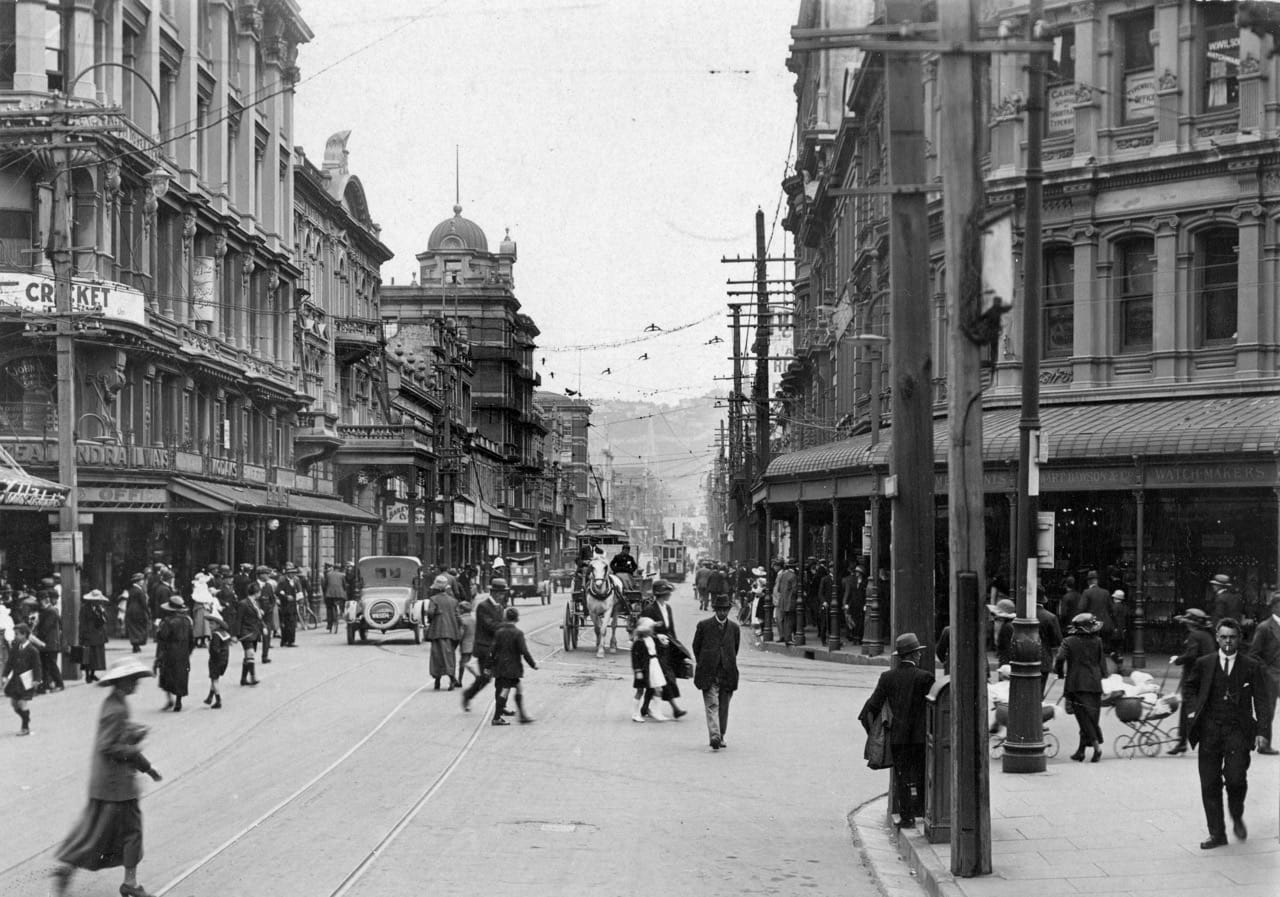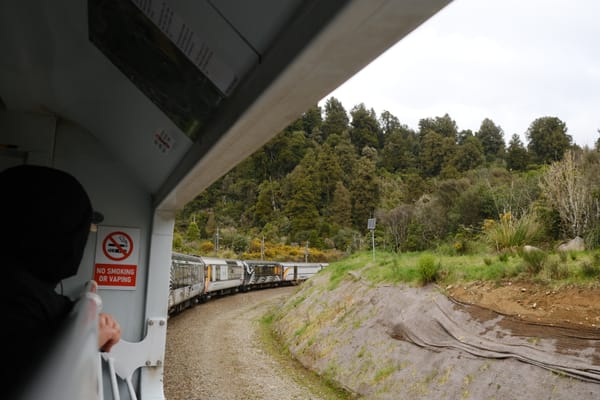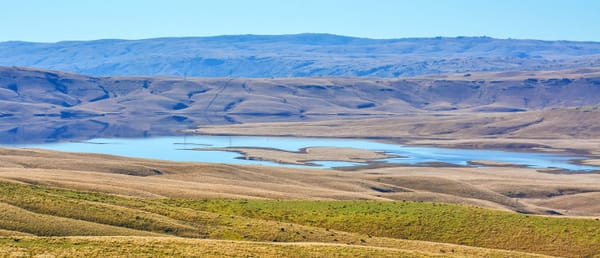A love letter to the 15 minute city
Living centrally in Wellington offers a first hand experience of what urban planners call the 15 minute city. After falling in love with this lifestyle, I want this option available for far more Wellingtonians.

Walking through Wellington on a lazy afternoon is one of the best feelings in the world.
On every street, a new surprise awaits. A mural calls to be photographed. Small shops striving to succeed invite you in. Cheap veggies are on sale at the local market. If you’re lucky, fairy lights dot the sky above.
My partner and I recently moved to the middle of the CBD. We have been lucky enough to set down roots in an apartment of our own. These walls are, for us, a great place to start a family. It is compact, comfortable. Best of all, a world of curiosities wait outside our door, day or night.
We are lucky: living centrally in Wellington offers a first hand experience of what urban planners call the 15 minute city. Places from Paris to Melbourne are transforming their cities to embrace this idea. After falling in love with this lifestyle, I want this option available for far more Wellingtonians.

The joys of closeness
From the turn of the species to the turn of the 20th Century, communities were defined by closeness. An acceptable distance to live from others was constrained by our feet or a horse’s hooves. Your butcher, baker, candlestick maker all needed to be nearby.
Technology changed everything. Train tracks and tyres expanded our region's horizons. Machines have shrunk the world, to my great gratitude. As the globe grew closer, mechanical movement from motorcars spread our cities out.
Though trains and trams incentivise longer trips, they keep communities close to a stop. Friends and whānau are never far from the train line you take.
Cars are different. Cities built for highways are diffuse, like smoke. Over time, people, culture, and business spread and spread and spread to fill the container of the city limits. Everything expands as far as possible to make room for countless empty vehicles to park.
Unlike moving by train, tram, bike or foot, when cities spread out there's no real option but a road. Community is locked behind the wheel.
There is another way: to condense our cities. To bring each other back to being close – to mix and mingle all parts of our lives within human distances.
15 minutes to everything
The 15 minute city is a simple catchphrase for a complex set of policies.
The principle is that wherever you live, everything you need should be a 15 minute walk, bike, or bus ride away. This is made with rules: building shitloads of housing on train and bus lines, designing city streets only for pedestrians and public transport, allowing shops and housing to coexist.
These urban planning rules create a delightful outcome: freedom. A 15 minute city makes visiting your doctor or dentist or drum teacher a breeze. To be free to walk 15 minutes to anything you need is a joy that's hard to put to words.
Take one afternoon a few weeks ago. I hopped on my bike after work at 4pm. I was home by 4:10pm. I strolled my granny trolley into town to collect my grocery order. The library was nearby, so I popped in to grab my next read. I snapped some photos of the waterfront as I walked home. By the time I got back and unpacked our week's supplies, it wasn't even 5pm.
The easy allure of a 15 minute city comes from the time and energy saved. I can do more in life without the cost of congestion or carbon pollution. Considering half of Wellington City's pollution comes from transport alone, there are serious benefits to helping people swap their SUVs for sneakers.
Close-knit cities are also economic engines. Recent research, covered superbly by Greater Auckland, showed that people are more productive and creative when they are exposed to other people in the thrill of the metropolis.
Evidence like this is catnip for economists and nerds: it's better for our time, our economy, and our environment.
So often, I would lean on these facts and figures to explain why a 15 minute city is important for protecting our climate. I could point to the time saved, the pollution prevented.
But where you decide to lay your roots is one of the most personal things you can choose to do. It’s far more about how a place makes you feel. How living that way makes you feel. I could mention every statistic in the world to explain why tight knit cities are marvellous. The reality is, I choose to live in a 15 minute city because I love how it feels.
Pounding the footpath to get groceries, I can people watch as workers descend from office blocks. My movement is sprinkled with surprises: a tempting glimpse into Unity Books, catching the sound of the evening bird chorus, smelling decadent desserts. There's no need to be glued to road markings. Instead I get to ponder, explore, be present.
When you are immersed in Wellington, you feel more like a Wellingtonian. That is a feeling I can't get enough of.
More Wellingtonians deserve this feeling
Right now, a small proportion of people in our region get to experience this feeling. I feel incredibly lucky that my family gets to enjoy the freedom that comes with living close to everything. Far too few of us get to enjoy a closely knit community that isn't limited by your access to petrol.
Large swathes of central Wellington is taken up by free standing houses worth multiple millions of dollars. At most, they fit one family. Meanwhile, politicians have built motorways to push young families and poorer people to the edges of our region. The spread will continue, unless we offer more homes for people to live in the city.
Wellington City Council agrees – huge areas of the central city will be welcoming in new residents because it's now far easier to build townhouses and apartments 15 minutes from everything.
I'd love a lot more people enjoying this place with me. More people deserve the chance to make lovely memories at the Opera House or Sixes and Sevens.
Not everyone will want the same trade off – but my hunch is huge numbers of Wellingtonians want to live right in town. Why else would land prices be so unaffordable in places like Mount Victoria?
If we are to live in a community that doesn't cost the earth, it will take more people living near one another. To have everything they need be within a 15 minute walk. To have fellow citizens at my side peeking into Unity Books or hearing the evening bird chorus. When more people join me in relishing Wellington, we'll be keeping carbon that would otherwise pollute our planet in the ground.
Trading pollution for community? That sounds like a pretty great trade to me.





